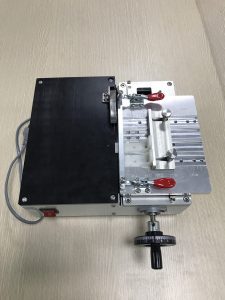Mechanical machining tolerance in Manufacturing processes
Machining tolerances play an important role in controlling precision. In this article, we will explore the concept of machining tolerances, their importance, and how they affect different industries.
1. What is Mechanical machining tolerance?
Machining tolerance, commonly referred to as simply ‘tolerance,’ denotes the permissible deviation from the nominal or ideal dimensions of a part or manufactured product. Essentially, tolerances establish an acceptable range within which the physical properties of a part can vary without compromising its function. These tolerances are established to accommodate the inherent limitations of the manufacturing process and to ensure the correct fit and intended functionality of the parts.
Tolerances are typically specified in technical drawings or blueprints using a combination of symbols, numerical values, and accompanying notes. They encompass various parameters such as size (length, width, height), appearance (shape), orientation (angle), and position (location of objects). By clearly defining tolerances, manufacturers and engineers establish the standard for quality control, facilitating consistent production and assembly.

2. Important benefits of Mechanical machining tolerance
2.1. Interchangeable parts
Machining tolerances ensure that parts produced in different batches or by different manufacturers can still seamlessly work together. This is particularly crucial in industries such as automotive and aerospace, where interchangeable parts are essential for repairs and maintenance.
2.2. Suitability and Function
Machining tolerances are integral to the proper assembly of mechanical systems. When parts fit together tightly with minimal gaps or interference, the result is a functional and reliable product. Conversely, excessive deviations from specified tolerances can lead to suboptimal performance or even failure.
2.3. Cost efficiency
Machining tolerances impact production costs. Tighter tolerances often necessitate more precise machining processes, which can result in increased production time and material waste. Balancing accuracy with cost efficiency is a crucial consideration in manufacturing.
2.4. Quality control
Machining tolerance is a crucial aspect of quality control as it aids in identifying and correcting deviations in the manufacturing process. This ensures that parts consistently meet performance and safety standards.
3. Common types of Mechanical tolerances
There are several common types of mechanical tolerances used to define acceptable variations in size, form, and other characteristics of manufactured parts. Here are some of the most frequently encountered types:
3.1. Dimensional tolerance
This represents the fundamental form of tolerance, defining the permissible variation range in linear dimensions such as length, width, height, and diameter. For instance, a component with a length of 100 mm and a tolerance of ±0.1 mm would allow for a range of 99.9 mm to 100.1 mm.

3.2. Geometric tolerance
Geometric tolerances are employed to regulate the form, orientation, and location of features on a part. They encompass symbols and modifiers that offer more detailed information regarding allowable variations.
Examples of geometric tolerances include:
- Straightness: Ensures that a feature remains straight within a defined tolerance zone.
- Roundness: Ensures that circular objects fall within a specified tolerance zone relative to their nominal center.
- Parallelism: Ensures that two or more surfaces or features remain parallel within a defined tolerance zone.
- Perpendicularity: Ensures that two surfaces or features are perpendicular within the specified tolerance zone.
- Concentricity: Ensures that two or more features share a common center axis within the specified tolerance zone.
- Position: Specifies the allowable deviation from the specified position for the feature’s center, typically using a designated datum reference.
3.3. Angular Dimensions tolerance
Angular dimensions tolerance governs the permissible deviation in angles between features or surfaces. For instance, it can specify the acceptable divergence in the orientation of a hole from a reference surface.
3.4. Profile tolerance
Profile tolerance defines the allowable variation in the cross-sectional shape of a feature along a specified reference. This type of tolerance is often employed for complex shapes that cannot be adequately controlled by basic dimensional tolerances.
3.5. Symmetrical tolerance
Symmetric tolerance ensures that a feature is arranged symmetrically around a specified axis or plane. This is crucial for maintaining balanced designs. Concentricity Tolerance is akin to the concentricity aspect of geometric tolerance, ensuring that two features share a common central axis within a specified tolerance zone.
3.6. Surface finish tolerance
Surface finish tolerance specifies the allowable variation in the texture or roughness of a surface. This type of tolerance is crucial to ensure the correct tightness, friction, or aesthetics.
3.7. Material Properties tolerance
In situations where specific material properties, such as hardness or strength, are crucial, tolerances can be established to ensure that these properties meet the required specifications.
Mechanical machining tolerance is an indispensable factor in the manufacturing process. Although the level of this tolerance may vary from project to project, there are virtually no scenarios where these values can be entirely disregarded. Therefore, emphasizing the importance of the information mentioned above can result in cost savings for your project and yield higher-quality results.

















